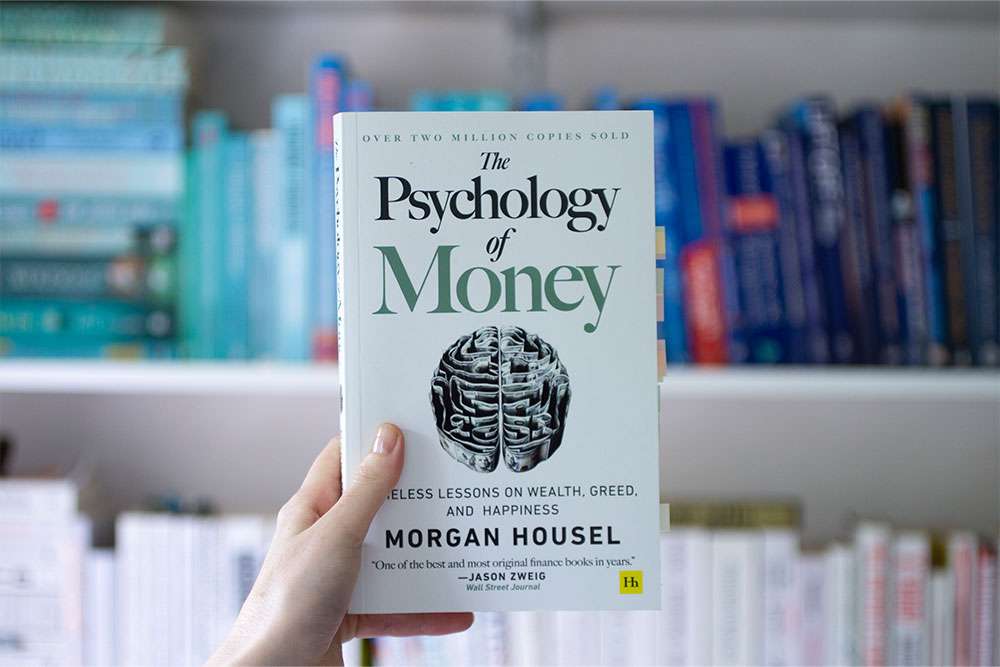Book Summary: The Psychology of Money
Top 11 Key Points and Lessons from The Psychology of Money by Morgan Housel

The Psychology of Money dives into how human behavior, emotions, and psychology influence financial decisions. It emphasizes that wealth management is less about spreadsheets and more about understanding why we behave the way we do with money. Below is a summary of the book's key lessons and concepts, with examples drawn directly from the text.
1. Wealth Is What You Don’t See
People often equate wealth with visible luxuries—cars, homes, and vacations—but Housel argues that true wealth is hidden. It’s the financial security, flexibility, and freedom that comes from saving and investing rather than spending.
Example: Ronald Read vs. Richard Fuscone
Ronald Read, a janitor who lived modestly, accumulated an $8 million fortune through frugality and consistent investing. In contrast, Richard Fuscone, a high-earning executive, declared bankruptcy after maintaining a lavish lifestyle he couldn’t sustain. The lesson is clear: visible wealth can often mask financial instability.
2. Compounding Is the Most Powerful Force in Finance
One of the recurring themes in the book is the unparalleled power of compounding over time. Small, consistent actions can lead to massive results if given enough time.
Example: Warren Buffett
Housel highlights how Warren Buffett’s fortune largely stems from the fact that he started investing at age 10 and has kept at it for over 80 years. His net worth is less about exceptional returns and more about the sheer length of time his money has compounded.
3. Saving > Investing Genius
Housel stresses that financial success is more about having a high savings rate than finding the perfect investment strategy. The ability to save consistently, regardless of income level, is more impactful in the long run.
Example: The Author’s Own Experience
Housel shares his story of prioritizing savings over chasing high returns. By maintaining a frugal lifestyle, he reduced financial stress and gained flexibility, proving that you don’t need extraordinary income or investment knowledge to build wealth.
4. Risk and Luck Are Inseparable
Success in finance often depends on factors beyond our control, like luck and timing. Recognizing this prevents overconfidence and encourages humility in financial decisions.
Example: Bill Gates and Kent Evans
Bill Gates attributes part of his success to attending one of the only high schools with access to a computer in the 1960s—a rare stroke of luck. In contrast, Kent Evans, Gates’ equally talented friend, tragically passed away at a young age. These examples show how luck and risk shape outcomes.
5. The Power of Financial Independence
Housel argues that true wealth isn’t about flashy possessions but the freedom to live life on your terms. Financial independence allows you to make choices without being constrained by money.
Example: The Author’s Definition of Rich
Housel explains that for him, being “rich” means waking up every day knowing he has control over his time. It’s not about material wealth but the ability to do what matters most.
6. Avoiding Lifestyle Creep
One of the most common financial pitfalls is lifestyle inflation—spending more as income increases. Housel advises resisting this urge to maintain financial stability and long-term happiness.
Example: Rajat Gupta
Housel tells the story of Rajat Gupta, a successful executive who sought more wealth and status despite already being incredibly rich. His greed led to illegal activities and imprisonment. The lesson: satisfaction is key to avoiding destructive financial decisions.
7. Patience Trumps Intelligence
The ability to stay the course, even when markets are volatile, is more valuable than intelligence or advanced financial models.
Example: Great Depression Survivors
Housel references those who endured the Great Depression and became overly conservative with money afterward. While their experiences shaped their behavior, the lesson today is to remain patient and trust in long-term strategies rather than reacting emotionally to short-term market changes.
8. Everyone Has Their Own Financial Story
Our upbringing, culture, and personal experiences deeply influence how we view and manage money. There’s no universal approach to finance because everyone’s perspective is shaped by unique circumstances.
Example: Generational Differences
Housel contrasts people who grew up during economic prosperity with those who experienced recessions or depressions. These experiences lead to vastly different attitudes toward saving, investing, and risk-taking.
9. Room for Error Is Essential
Building a financial buffer—saving more than you think you need—helps protect against unexpected challenges. Flexibility is the key to weathering uncertainties.
Example: Boeing During the 1970s
Boeing nearly collapsed during a downturn but survived because they maintained enough liquidity to ride out the tough times. This example underscores the importance of preparing for the unexpected.
10. Stop Comparing Yourself to Others
Comparison leads to dissatisfaction and poor financial decisions. Instead, focus on your own goals and values.
Example: CEOs vs. Regular Investors
Housel points out that comparing your portfolio to that of a billionaire CEO is futile because their goals and risk tolerance are entirely different. The lesson is to define success on your own terms.
11. Tails Drive Results
In finance, a small number of events often account for the majority of outcomes. Understanding and accepting this can help manage expectations.
Example: Venture Capital
Venture capital firms expect most investments to fail, but a single “home run” can make up for all the losses. This principle applies to personal finance, too: a few key decisions or investments can define long-term success.
Final Thoughts: Lessons from The Psychology of Money
The Psychology of Money emphasizes that building wealth is more about mindset and behavior than numbers and formulas. Lessons like embracing patience, saving consistently, and defining your own success resonate because they’re rooted in universal human experiences.
The book encourages readers to reflect on their own financial stories and make intentional, thoughtful choices. It’s not about perfection or comparison—it’s about understanding what truly matters to you and building a financial life that aligns with those values.




